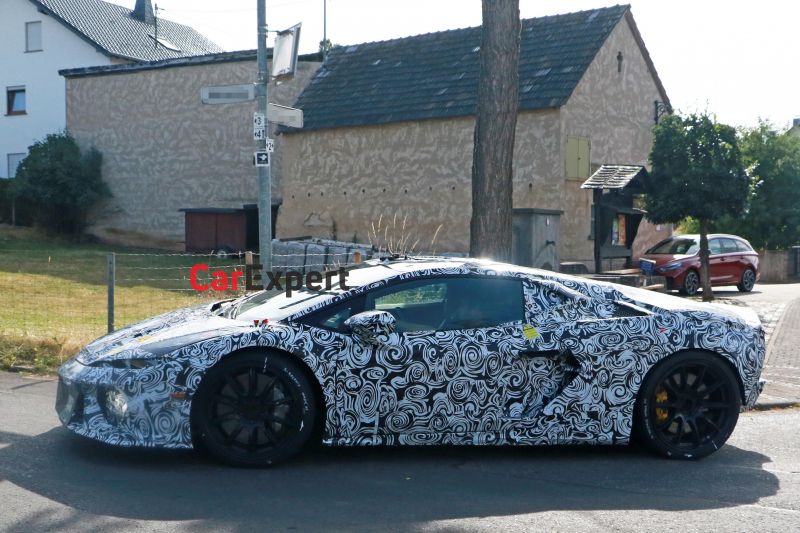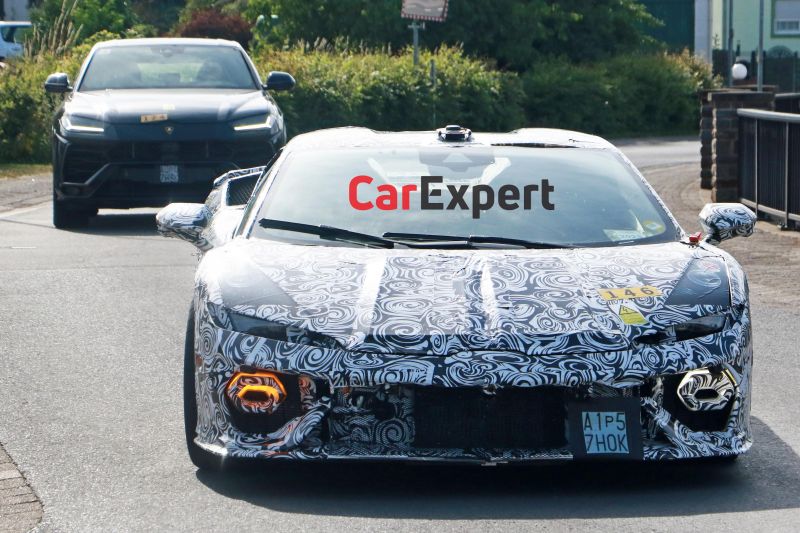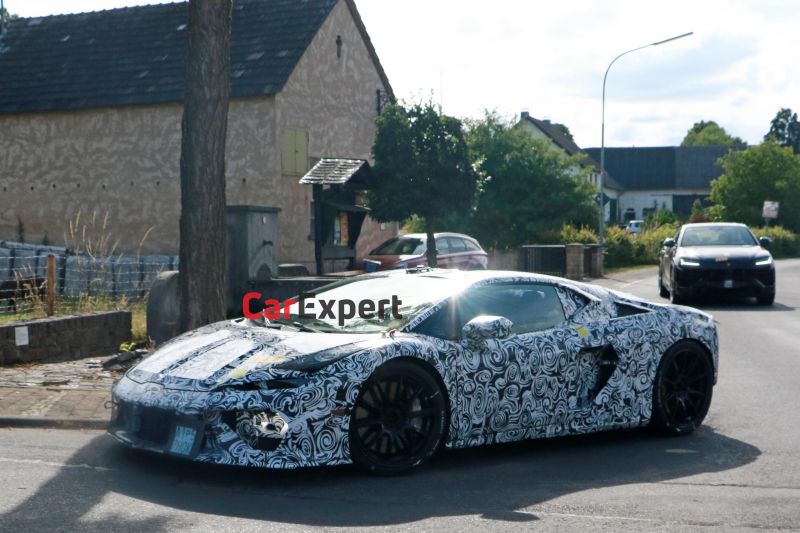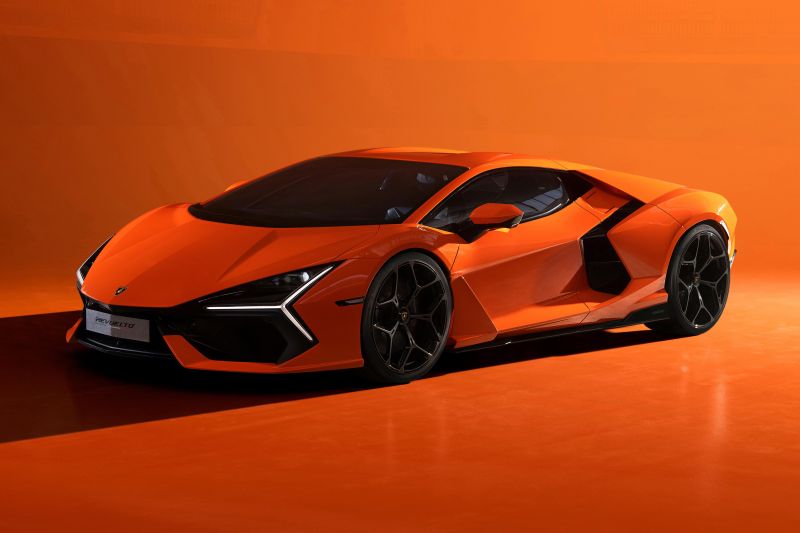Lamborghini is continuing to put its hybrid Huracan replacement through its paces ahead of a launch next year.
The electrified Huracan replacement – the name of which has yet to be revealed – features a design language first seen on the wild Essenza SCV12 track toy and Revuelto supercar.
It’s quite clear the Huracan replacement features some sort of electrification, given the presence of yellow warning stickers and an isolator switch on one of its front fenders. The prototype was accompanied by a Urus, also wearing yellow hybrid stickers.
The prototype retains Huracan-like proportions but now features slim headlights with a more open grille, a nod to the Essenza SCV12, but also likely a necessity in order to cool the hybrid powertrain.
The hexagonal fog lights lights are housed in the lower grille and now double as daytime running lights and indicators.
Atop the steeply raked windscreen, we can see a module of some description.
While it’s unlikely to be a LiDAR module, the Huracan replacement will feature at least a basic level of obstacle recognition capability, with a camera seen integrated into the rear-view mirror and a radar unit in the lower grille. These systems are key to any active safety suite.
Looking down the side of the car, the spied model appears more slab-sided than the Huracan.
Also evident is the increased amount of cooling the new model demands. Air intakes can be found on the sides of the car just before the rear wheels. Additionally, a pair of intakes flank the B-pillars.
The rear of the Huracan replacement draws heavy inspiration from the Revuelto, despite being covered with copious amounts of camouflage.
Slim tail lights bookend twin, top-exit exhaust pipes, although they are housed in one hexagonal exhaust shroud.
An aggressive diffuser completes the rear fascia. The spy shots reveal that some diffuser strakes begin in front of the rear wheels, hinting that Lamborghini has put significant thought into the aerodynamics of the new model.
In a similarly aggressive move, the back side of the tyre remains largely uncovered. Aerodynamic design like this is often used in the world of racing to alleviate high pressure zones that form in the wheel wells of cars. It’s unclear however, if the aggressive design will make it into production.
Some reports suggest that the model will adopt a twin-turbo V8, but CarExpert understands it could house a naturally aspirated V10 hybrid to differentiate it from the V8 and V6 offerings of Ferrari and McLaren.
Speaking to CarExpert, Francesco Scardaoni – the brand’s regional director of Asia Pacific, said: “That will be a new V10, the new Huracan, up to now we can not disclose what engine will be fit to the car. But it will be a hybrid.”
“Because our hybridisation phase, the Huracan will be 2024 where we will release the hybrid version of the new Huracan, mid ’24, we will release the new car,” he added.
What is confirmed is that Lamborghini will develop the new model’s bespoke platform and engine independently of sister brand Audi, unlike the previous Huracan which shared its underpinnings with the Audi R8.
The Huracan successor will reportedly share the ‘monofuselage’ construction developed for the Revuelto, but will use aluminium instead of carbon fibre.
“Lamborghini became one of the most profitable brands within the group this year, we set another record year in terms of operating profit…. and because being the brand with the highest profitability, of course, you have the power to ask certain things and also to self-fund the project,” Mr Scardaoni told CarExpert.
The new Huracan will follow the V12 hybrid successor to the Aventador, the recently revealed Revuelto.
Lamborghini is also introducing a plug-in hybrid V8 version of the Urus SUV at the end of 2024.
Australia is expected to see the first units of the new Huracan and Urus by 2025.
The Italian brand’s busy two years of electrification are building up to the release of its first electric vehicle, a 2+2 model expected to launch in 2028.





